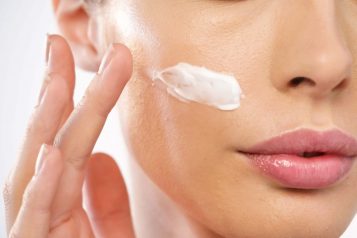Dr. Samuel Lin is a double board-certified Plastic Surgeon and Associate Professor of Surgery at Harvard Medical School who practices in Boston, Massachusetts. Dr. Lin received his Bachelor’s degree in Biomedical Engineering at Northwestern University and was enrolled in the Honors Program for Medical Education at Northwestern University, Feinberg School of Medicine, Chicago, Illinois. Dr. Lin is board certified by both the American Board of Plastic Surgery and the American Board of Otolaryngology-Head and Neck Surgery. Dr. Lin is board certified by two ABMS boards. He is Program Director of the BIDMC-Harvard Plastic and Reconstructive Surgery residency, and Co-Director of the Harvard Aesthetic and Reconstructive Plastic Surgery Fellowship at BIDMC. Dr. Lin has been a Boston “Top Doc” for several years in plastic surgery.
 Photo Credit: Shutterstock
Photo Credit: Shutterstock
The term “jowls” refers to sagging skin below the jawline and chin. With aging, the skin becomes less elastic and more prone to sagging. Over time, this decrease in skin elasticity and the effects of gravity can cause the skin to sag below the jawline, creating jowls.
Some people may be bothered by the appearance of jowls. Facelift and neck lift are the most effective options to reduce or eliminate jowls. For those seeking a less extensive surgery with smaller scars, a mini-facelift is another option that can significantly improve jowls. Here Haute Beauty experts Natalie Hassell and Dr. Samuel Lin, MD, FACS discuss mini facelifts and other options to improve your jowls. Here’s what they had to say:
A mini facelift is also called a short scar facelift because a mini facelift results in a shorter scar than a regular facelift. During a mini facelift surgery, the surgeon makes an incision right in front of the ear. Excess skin will be removed and the remaining skin is repositioned to lay smoothly. Then, the incision is closed so that the scar is hidden just in front of the ear. After a mini-facelift, most patients feel ready to return to work after 4 weeks. While a mini-facelift is less extensive than a regular facelift, it is still surgery. Some temporary pain during recovery is possible but will be carefully managed by your surgeon.
Many people are candidates for a mini-facelift. However, if a patient has significant loose skin around the neck, they might be a better candidate for a regular facelift than a mini facelift. Additionally, patients who smoke cigarettes are not good candidates since they may have trouble healing after surgery.
 Photo Credit: Shutterstock
Photo Credit: Shutterstock
For patients not interested in surgery, the appearance of jowls can be minimized with fillers. Typically, this involves placing a judicious amount of filler around the cheekbones to help lift and smooth the skin of the lower face, which can reduce the appearance of jowls. Results with fillers will not be as dramatic or long-lasting as with surgery, but fillers can be a good option for those with mild jowls or those who are interested in a non-surgical treatment. Cheek filler can last about 6 months to two years, depending on how fast your body breaks down the filler.
Most people can be candidates for filler to help reduce jowls. It is important to speak to your plastic surgeon to determine what is best for your individual situation. While injections are not painless, they are usually well tolerated by patients and take a few moments each. In some cases, a numbing cream or ointment may be used. The procedure takes approximately 15-30 minutes. Recovery from filler is relatively quick – no real downtime is needed, though strenuous activity should be avoided for the first 24-48 hours to limit the chances of swelling and bruising.
Finally, another non-surgical option to consider is an ultrasound skin-tightening procedure such as Sofwave and Ultherapy. These devices use ultrasound energy to stimulate collagen production which can help tighten the skin and improve mild jowling. These procedures require no downtime and are safe for all skin types and colors. Results from ultrasound skin tightening are less dramatic than with surgery and are not permanent, lasting approximately one year.
If you are interested in surgical or non-surgical treatment to address jowls, consider consulting with a board-certified plastic surgeon to learn more about the best options for your individual situation.
For more information, visit Dr. Brian A. Levine's social media:

























